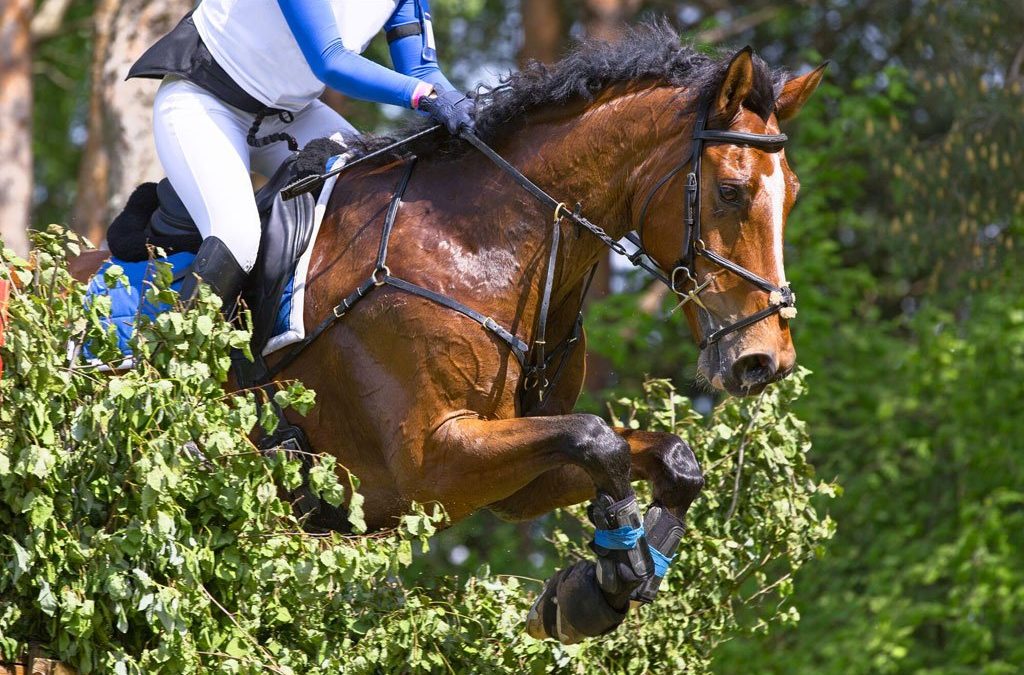As the summer temperatures rise, heat and humidity become an issue for those trying to exercise and train horses without putting both horse and rider in danger of becoming dehydrated, fatigued or suffer from heat stress. Madalyn Ward, DVM in Holistic Horsekeeping provides this advice when trying to decide to ride or not in high heat and humidity: “Luckily, there are simple ways that you can help your horse stay cool during hot humid weather. During these weather conditions, the first thing to do is to calculate the temperature-humidity index (THI): simply add the air temperature (in degrees Fahrenheit) to the percentage of humidity.
For instance, if the air temperature is 80 degrees Fahrenheit and the humidity is 60 percent, the THI is 140. When the THI reaches about 150, your horse may have difficulty cooling off. At a THI of 180, you should not work your horse and you should take active steps to keep him cool.
Another method to check whether your horse is getting too hot during humid weather is to take his temperature. A horse’s normal temperature range is between 99.5 and 100.5 degrees Fahrenheit, and can reach 103 and 104 degrees during workouts. If your horse’s temperature reaches 105, he is danger of being overheated and can suffer chronic or permanent damage. Above 105 degrees, your horse will be suffering from heatstroke and will need immediate veterinary attention”.
Taking some very careful precautions can help prevent over exertion while riding:
- Try to ride in the early morning or evening when the sun is not out
- Make sure both horse and rider are fully hydrated before exercising
- Rider should wear clothes that are light and wick away sweat. Be sure to use sunscreen to keep from burning
- Hose down the horse before and after exercising with cool water
- Scrape water off horses after wetting them and then reapply: leaving the water on them only acts like an insulator once it has heated up
- Do not put wet towels on a hot horse: the towel retains heat and is counter productive
- Keep horses up and under fans during the day so that they stay cool, dry and fresh
- Feed lots of forage such as alfalfa which does not create as much heat when fermented as does grass hay. Feeding ample amounts of forage will encourage drinking so be sure to offer fresh cool water at all times
- Change the water in the tub/bucket if it becomes hot
- Make sure there are several water sources for pastured horses that may compete for a single water source
- Provide pastured horses with some type of shade from trees, sheds or open stalls that they can come and go into as they please
- Make sure both horse and rider are fit and acclimated to work in heat and humidity
- Take more breaks than normal and walk for longer periods of time than usual
- Instead of bathing horses that are non-sweaters (anhydrosis) try sponging these horses with air-temperature water mixed with a liniment. This practice also helps horses who are prone to heat rashes
- Trailer horses at night or in early morning
Always be sure to offer free choice white salt as part of the normal feeding program. For horses that absolutely must train in the heat and are losing electrolytes through sweat at a high rate, be sure to supplement with a salt based electrolyte that is formulated to supply the horse with the correct amount and proportion of minerals that have been sweated out.
This blog post was originally posted on Tuesday, July 17th, 2012 at Equine Nutrition and Health Services Blog. Blog article was re-posted with permission from blog owner, all rights reserved.

